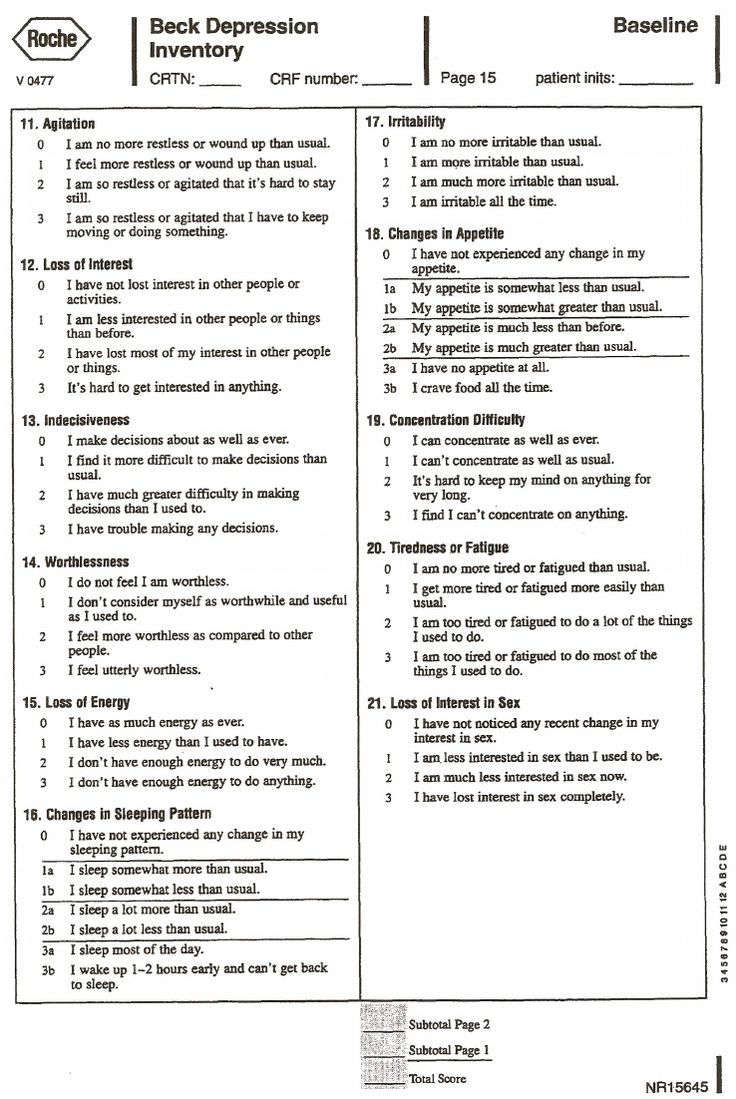

The primary outcome is the frequency and intrusiveness of suicidal imagery. The anticipated flow of subject enrolment is graphically shown in Fig.
Beck hopelessness scale free download trial#
The study is a multicenter randomized clinical two-armed, parallel-designed trial that will evaluate the effects of EMDT in combination with treatment as usual (TAU) compared to TAU alone. Lastly, we will evaluate the cost-effectiveness of EMDT. Next, we will explore the potential role of the following moderators and mediators in explaining the effect of EMDT itself: a reduction in suicidal ideation, baseline depressive symptom severity, presence of childhood trauma, obsessive-compulsive traits, and potential effects of taxing the working memory. In addition, we will evaluate the potential mediating effect of suicidal imagery on suicidal ideation, as well as depressive symptoms. This multicenter randomized trial aims to evaluate the effectiveness of EMDT in reducing suicidal mental imagery in depressed patients. This paper describes the trial procedures for this study. The relevance of our study is that, if proven effective, the addition of EMDT to regular treatment may reduce the frequency and vividness of suicidal imagery. However, while EMDR has recently been applied effectively in treating other psychiatric disorders such as psychosis, there is no empirical evidence yet that this technique is effective for suicidal intrusions. Currently, Eye Movement Desensitization and Reprocessing (EMDR), an evidence-based dual task-treatment for posttraumatic stress disorder (PTSD) that is characterized by trauma-related intrusions is also being applied in routine clinical practice to treat suicidal images. This may be a novel perspective on how suicidal intrusions may be addressed, so we have developed an Eye Movement Dual Task (EMDT) additive intervention. Since the eye movements reduce resources for recall, the image is rendered less intense, even upon recall. It is assumed that recalling an emotional image and performing eye movements both require working memory resources. Examples include images of their own suicide (jumping in front of a train, seeing themselves after an overdose) or the aftermath thereof (attending their own funeral, seeing the reaction of their family members).Įxperimental and clinical studies showed that vividness of both negative and positive intrusive images may be reduced by dual task interventions taxing the working memory such as eye movements. These images may be both distressing and comforting, as well as compelling. Various studies revealed that the majority of patients diagnosed with major depression or bipolar disorder report repetitive intrusive suicide-related images and thoughts. One factor that may potentially be of influence on the latter, either directly or indirectly, is the presence of intrusive suicidal imagery (also called: suicidal intrusions). However, one recent development in the suicide theory research is the ideation-to-action framework, which suggests that the development of suicidal ideation is distinct from the progression from ideation to suicide attempts. While suicide prevention interventions have been developed, little remains known about which processes link suicidal plans to the act of suicide. This study aims a) to evaluate the effectiveness of an Eye Movement Dual Task (EMDT) add-on intervention targeting suicidal imagery in depressed patients, b) to explore the role of potential moderators and mediators in explaining the effect of EMDT, and c) to evaluate the cost-effectiveness of EMDT.Įach year, close to 800,000 people worldwide die by suicide, and for every suicide there are many more people who attempt suicide. We propose that a dual task intervention may also reduce frequency and intensity of suicidal imagery and may be crucial in preventing the transition from suicidal ideation and planning to actual suicidal behaviour.

eye movements) interventions taxing the working memory. Various studies showed that vividness of negative as well as positive intrusive images may be reduced by dual task (e.g.

Growing evidence shows that the majority of suicidal patients diagnosed with major depression or bipolar disorder report repetitive suicide-related images and thoughts (suicidal intrusions). Suicide is a major public health problem, and it remains unclear which processes link suicidal ideation and plans to the act of suicide.


 0 kommentar(er)
0 kommentar(er)
